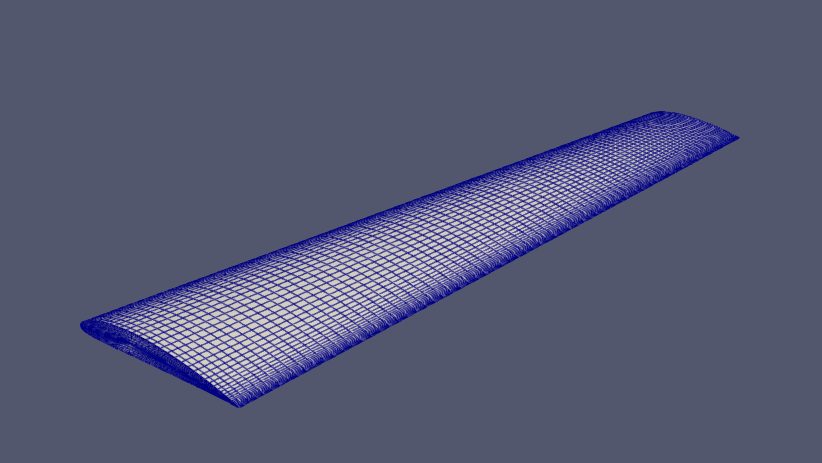Numerical analysis of rotor performance and noise
JAXA Supercomputer System Annual Report February 2022-January 2023
Report Number: R22ETET42
Subject Category: Skills Acquisition System
- Responsible Representative: Hitoshi Arizono, Aeronautical Technology Directorate, Aviation Environmental Sustainability Innovation Hub
- Contact Information: Shigeru Sunada, Nogoya University(shigeru.sunada@mae.nagoya-u.ac.jp)
- Members: Airi Furukawa, Reo Iida, Masahiko Sugiura, Hideaki Sugawara
Abstract
In order to enhance the efficiency of an urban air mobility with coaxial rotors and to decrease the noise generated by the mobility, numerical calculations of a coaxial rotor have been made as a parameter of an aspect ratio of blades.The pressure distribution on the blades and the sound pressure at an observer were calculated by using the rFlow3D and rNoise, respectively.
Reference URL
N/A
Reasons and benefits of using JAXA Supercomputer System
Computational resources and computational capability are required to perform many numerical simulations.
Achievements of the Year
In the present analysis, the rotor diameter, the mean lift coefficient along the blade span at hover and the distance between the upper and lower rotors were fixed. In the present analysis, when the aspect ratio was increased, the chord length was decreased and the rotational speed and the tip Mach number were increased. As a result, Reynolds number is decreased. When the aspect ratio is higher, the induced drag is decreased, and conversely the profile drag is increased because Reynolds number is decreased. Therefore, the aspect ratio for the maximum efficiency was observed. On the other hands, the sound pressure at an observer is decreased when the tip Mach number is decreased. Then, the sound pressure is lower with the decrease of the aspect ratio. Considering the effects of the aspect ratios on the efficiency and the sound pressure, which were stated above, the optimal aspect ratio for higher efficiency and lower sound pressure exists.
Publications
– Oral Presentations
Airi Furukawa, Hideaki Sugawara, Yasutada Tanabe, Kohei Yamaguchi, and Shigeru Sunada, Rotor Blade Design for Flying Cars Using Performance and Noise as Evaluation Metrics, The 60th Aircarft Symposium
Usage of JSS
Computational Information
- Process Parallelization Methods: N/A
- Thread Parallelization Methods: OpenMP
- Number of Processes: 1
- Elapsed Time per Case: 100 Hour(s)
JSS3 Resources Used
Fraction of Usage in Total Resources*1(%): 0.01
Details
Please refer to System Configuration of JSS3 for the system configuration and major specifications of JSS3.
| System Name | CPU Resources Used(Core x Hours) | Fraction of Usage*2(%) |
|---|---|---|
| TOKI-SORA | 1960.19 | 0.00 |
| TOKI-ST | 74175.43 | 0.07 |
| TOKI-GP | 0.00 | 0.00 |
| TOKI-XM | 0.00 | 0.00 |
| TOKI-LM | 0.00 | 0.00 |
| TOKI-TST | 0.00 | 0.00 |
| TOKI-TGP | 0.00 | 0.00 |
| TOKI-TLM | 0.00 | 0.00 |
| File System Name | Storage Assigned(GiB) | Fraction of Usage*2(%) |
|---|---|---|
| /home | 75.20 | 0.07 |
| /data and /data2 | 18011.04 | 0.14 |
| /ssd | 380.30 | 0.05 |
| Archiver Name | Storage Used(TiB) | Fraction of Usage*2(%) |
|---|---|---|
| J-SPACE | 0.00 | 0.00 |
*1: Fraction of Usage in Total Resources: Weighted average of three resource types (Computing, File System, and Archiver).
*2: Fraction of Usage:Percentage of usage relative to each resource used in one year.
ISV Software Licenses Used
| ISV Software Licenses Used(Hours) | Fraction of Usage*2(%) | |
|---|---|---|
| ISV Software Licenses(Total) | 0.00 | 0.00 |
*2: Fraction of Usage:Percentage of usage relative to each resource used in one year.
JAXA Supercomputer System Annual Report February 2022-January 2023




